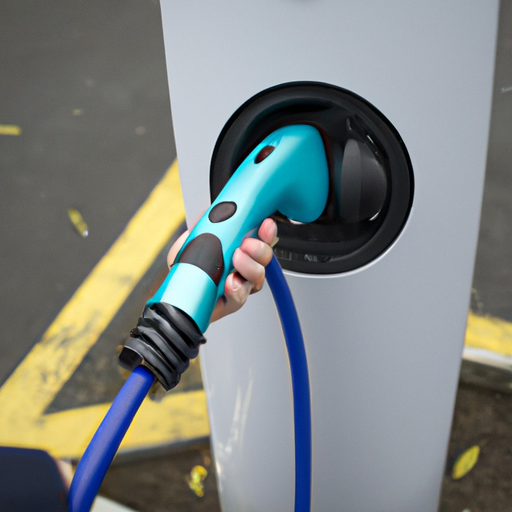Are you considering switching to an electric vehicle but are hesitant because of range anxiety? Well, you’re not alone. Range anxiety, the fear of running out of battery power before reaching your destination, is a legitimate concern for many potential electric vehicle adopters. In this article, we will explore the impact range anxiety has on the adoption of electric vehicles and how it is influencing the decisions of eco-conscious drivers like yourself.
H2 Heading 1
H3 Subheading 1
Range anxiety is a significant factor that affects the adoption of electric vehicles (EVs). When considering making the switch to an EV, many people are concerned about the limited range these vehicles offer compared to traditional gasoline-powered cars. This fear of running out of battery and being stranded on the road, known as range anxiety, can be a significant barrier to EV adoption.
H3 Subheading 2
Range anxiety arises from the fear of not being able to find a charging station or running out of battery power before reaching a destination. This fear stems from the limited charging infrastructure, especially in rural areas, and the time it takes to charge an EV compared to refueling a gasoline car. As a result, potential EV owners may hesitate to make the switch, fearing the inconveniences and limitations caused by range anxiety.
H3 Subheading 3
However, it’s essential to note that range anxiety is often based on misconceptions and outdated perceptions about EV technology. Modern electric vehicles have seen significant advancements in battery technology, allowing for longer driving ranges. Most EVs can now go over 200 miles on a single charge, and some high-end models even offer ranges exceeding 300 miles. Additionally, the growth of charging infrastructure, especially in urban areas, has made it easier for EV owners to find a charging station and alleviate range anxiety concerns.
H2 Heading 2
H3 Subheading 1
One way to address range anxiety and promote EV adoption is by improving public charging infrastructure. Governments and private entities should invest in the installation of charging stations in key locations, such as parking lots, shopping centers, and highways. Increasing the availability and accessibility of charging stations will help alleviate range anxiety, as EV owners will have peace of mind knowing they can easily find a charging point when needed.
H3 Subheading 2
Another aspect to consider is the development of fast-charging technologies. Currently, charging an EV takes longer than refueling a conventional car. However, advancements in fast-charging technologies, such as Tesla’s Supercharger network, have significantly reduced charging times. By allowing EVs to charge quickly and efficiently, these technologies can help alleviate range anxiety and make EV ownership more convenient.
H3 Subheading 3
Moreover, educating potential EV owners about the realities of range and charging capabilities is crucial in dispelling the misconceptions surrounding range anxiety. Providing accurate information about the driving range of different EV models and the availability of charging infrastructure will help individuals make informed decisions when considering purchasing an electric vehicle. By presenting them with the facts, potential EV owners can better understand the capabilities and limitations of EVs, reducing their range anxiety.
H2 Heading 3
H3 Subheading 1
It’s also important to highlight the environmental benefits of electric vehicles to encourage adoption. EVs produce zero tailpipe emissions, reducing air pollution and greenhouse gas emissions. By switching to an electric vehicle, individuals can contribute to combating climate change and improving air quality. Emphasizing these positive aspects can help potential EV owners overcome their range anxiety and understand the broader implications of EV adoption beyond personal convenience.
H3 Subheading 2
Furthermore, government incentives and policy support can play a crucial role in encouraging electric vehicle adoption. Financial incentives, such as tax credits or rebates, can make EVs more affordable and attractive to potential buyers. Additionally, governments can implement regulations that require the expansion of charging infrastructure, further reducing range anxiety. By creating a supportive environment, policymakers can help alleviate range anxiety and accelerate the transition to electric vehicles.
H3 Subheading 3
Lastly, technological advancements in battery technology can help address range anxiety. The development of high-energy-density batteries that offer even greater driving ranges can eliminate range anxiety concerns entirely. Companies and researchers are continuously working on improving battery technology to make EVs more competitive with traditional gasoline cars. As battery technology continues to evolve, range anxiety will likely become less of an issue, further facilitating electric vehicle adoption.
H2 Heading 4
H3 Subheading 1
In conclusion, range anxiety can significantly impact electric vehicle adoption. The fear of running out of battery and being stranded on the road can discourage potential EV owners from making the switch. However, through the development of charging infrastructure, advancements in fast-charging technologies, accurate information dissemination, environmental advocacy, government support, and improvements in battery technology, range anxiety can be effectively addressed. As these efforts continue, more individuals will feel confident and comfortable adopting electric vehicles, leading to a cleaner and more sustainable transportation future.
